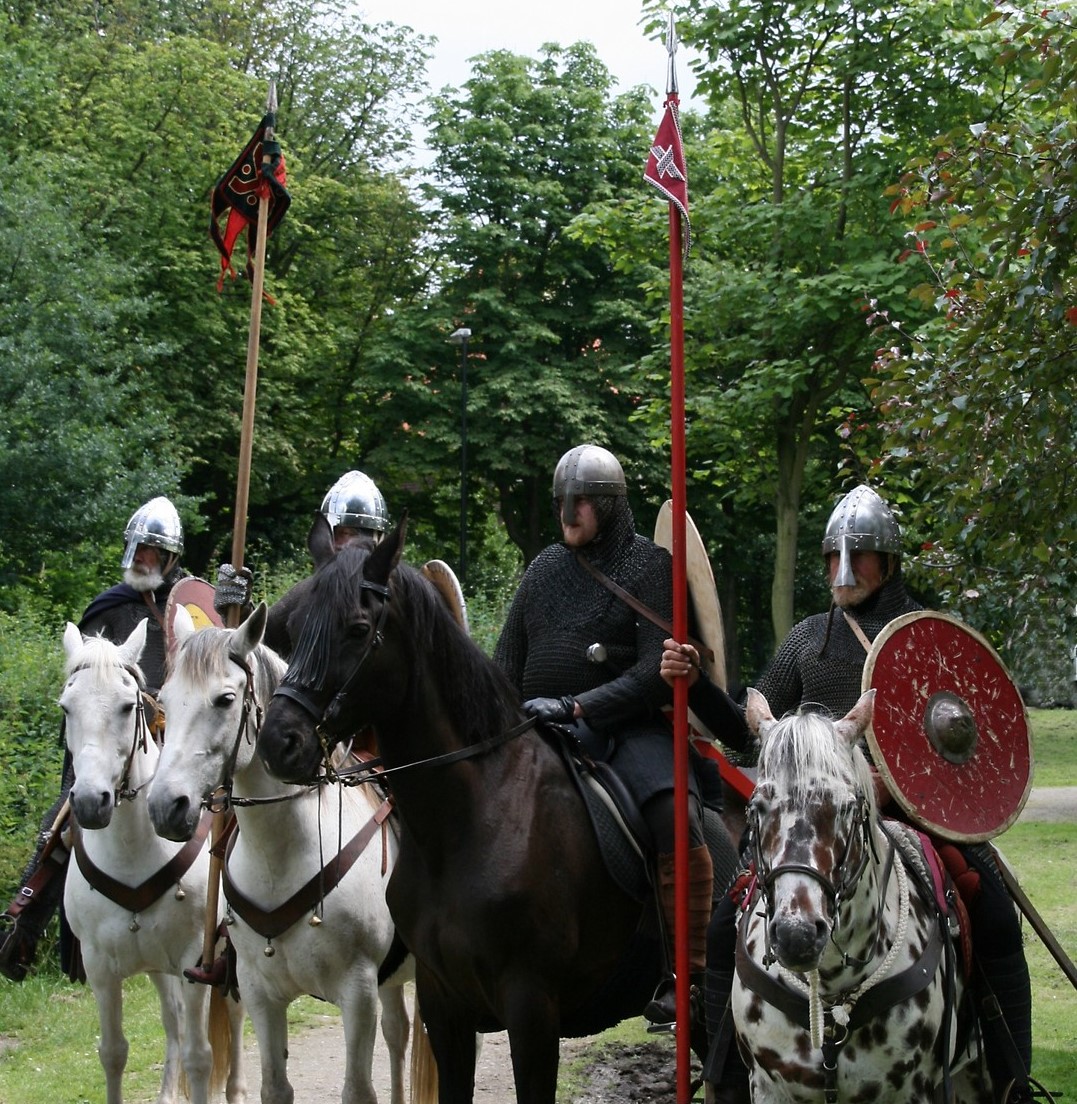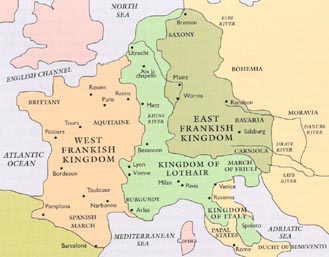
The roots of european wars

The Treaty of Verdun (August 843) was a treaty between the three surviving sons of Louis the Pious, the son and successor of Charlemagne, which divided the Carolingian Empire into three kingdoms.
Lothair received the central portion of the empire which later became, from north to south: the Low Countries, Lorraine, Alsace, Burgundy, Provence, and the Kingdom of Italy (which covered only the northern half of the Italian Peninsula), collectively called Middle Francia.
Louis the German received the eastern portion. Louis was guaranteed the kingship of all lands to the east of the Rhine and to the north and east of Italy, which was called East Francia which was the precursor to the Medieval conglomeration of disparate states known as the Holy Roman Empire and thence to modern Germany.
Charles the Bald received the western portion, which later became France. Charles received all lands west of the Rhône, which was called West Francia.

The division of the Frankish realm by the Treaty of Verdun, carried out without any regard to linguistic and cultural continuities, induced conflicts in Western Europe until the 20th century. Since the Middle Frankish Kingdom combined lengthy and vulnerable land borders with poor internal communications as it was severed by the Alps, it was not a viable entity and soon fragmented. This made it difficult for a single ruler to reassemble Charlemagne's empire. Only Charles the Fat achieved this briefly. In 855, the northern section became fragile Lotharingia, which became disputed by the more powerful states that evolved out of West Francia and East Francia (i.e., France and various Germanic states that united as Germany in the 19th century). The collapse of the Middle Frankish Kingdom also compounded the disunity of the Italian Peninsula, which persisted into the 19th century.
Generations of kings of France and Germany were unable to establish a firm rule over Lothair’s kingdom.
The campaign will simulate the wars between Charlemagne heirs to stabilize the control over their lands, fighting the many enemies of the Franks and also the rivals, in the attempt to seize back the control of the whole empire.
The players needed are at least three and they will take the role and control the armies of:
Lothair, Charles the Bald and Louis the German, each one leading a Carolingian army post 843 (list III/28). They will be called imperial players.
To give some differentation to the armies, Charles the Bald can use Aquitanian options, while Louis the German can downgrade 0-6 IKnF to ICvO instead of 0-3. No allies can be selected at start.
A fourth player can control all external enemies. These can be used by more than one players if you want to involve more people.
The campaign last 6 turn, each one representing a variable and generic period of warfare of 1-5 years.
In each turn one of the three players will randomly receive the initiative, with the rule that iniziative cannot be received more than two times. In such a way each one of the three players will get it two times.
The player with the initiative will declare against which other player he will launch a military campaign. The third players, not involved in the fighting, will fight against an external enemy.
Two battles will be fought each turn. The first between the empire rivals, will see the player with the initiative as the aggressor. The other battle will be a raid or invasion by a random active external enemy with a roll of 1-4. A roll of 5-6 will let the imperial player to invade and fight an enemy of his choice.
This is the list of external enemies that each imperial player has
Lothar: Danish Leidang (III/40), Viking (III/40), Italian Lombard (III/21), Magyars (III/30)
Charles the Bald: Breton (III/18), Andalusian (III/34), Feudal Spanish (III/35), Viking (III/40)
Louis the German: Magyar (III/30), Moravian (III/1), Early Croats (III/26), Viking (III/40)
All these armies must use 843AD options
The external enemies will be subdued if beaten in battle. Once this happens they are no more active and could be used as allies if the conditions are met.
Once the battle is fought, the winner will receive one prestige point, while the loser will lose one. Prestige points represent the ruler charisma over his fellows and nobles, territories conquered, resources from loot and treaties imposed over vanquished enemies, the organization of administrative control over the state by a successful ruler.
Each imperial player starts with 4 prestige points. The campaign winner is the player(s) that at the end has earned more or has reached the automatic victory condition.
The prestige points have these cumulative effects on the game, applied immediately:
8 prestige points: Automatic victory
7 prestige points: One ally general is treated as subgeneral
6 prestige points: The player can use as ally an external enemy that has been beaten
2 prestige points: One ally general will be unrealiable with a 1-2 die roll
1 prestige point: Another one ally generals will be unrealiable with a 1-2 die roll
0 prestige points: The state collapse in anarchy, with nobles revolting and people rebelling. The games ends immediately and the winner is the player(s) with more prestige points.
The campaign can be played with DBMM 100 in one day, or using DBMM200 or 400 for a multisession game.